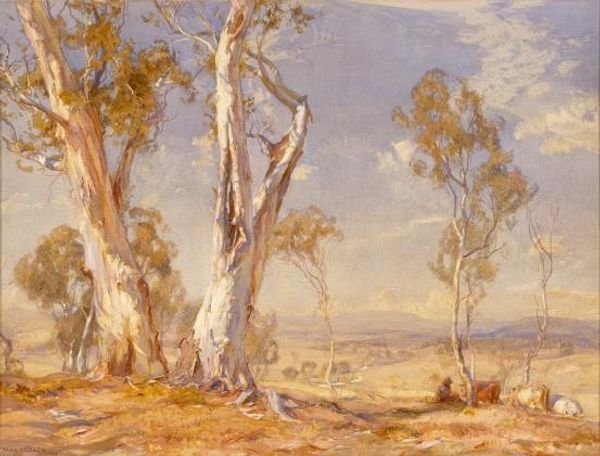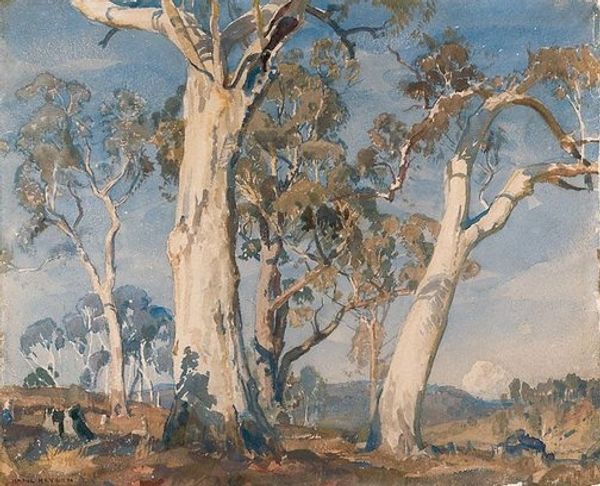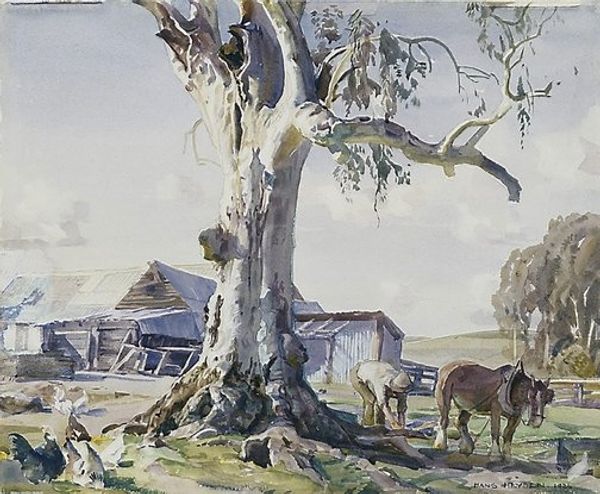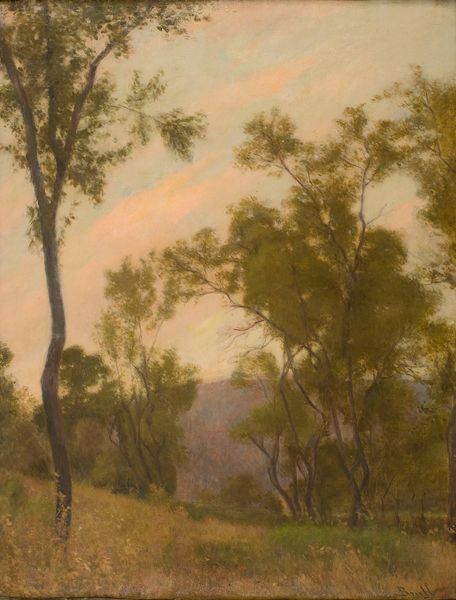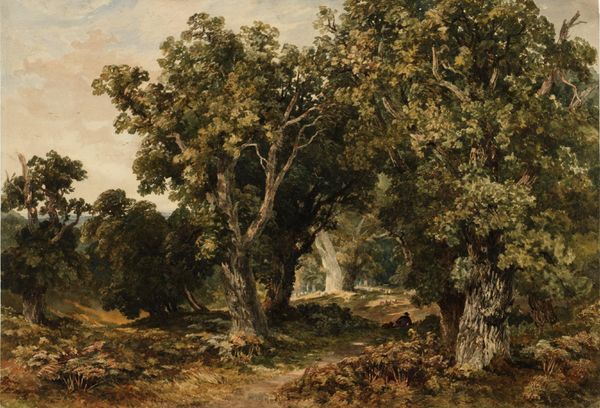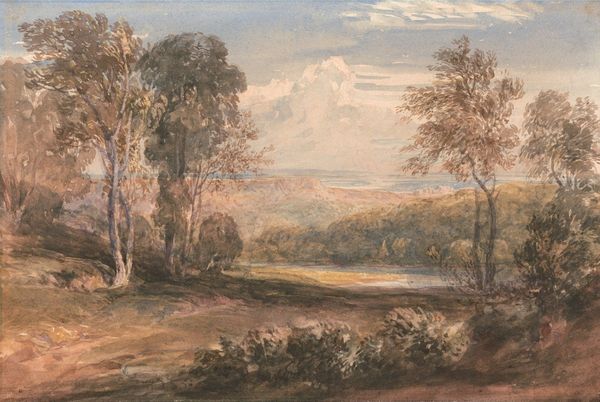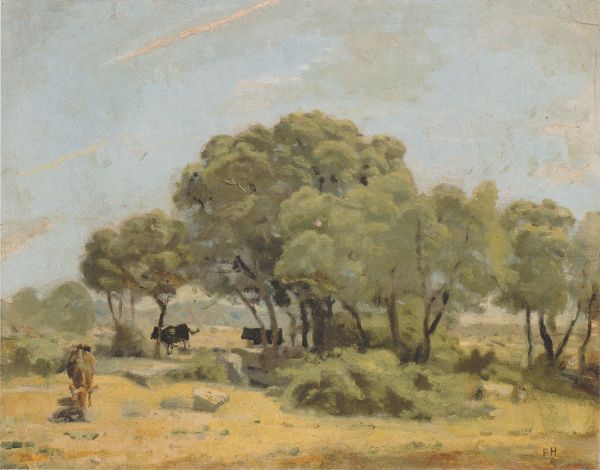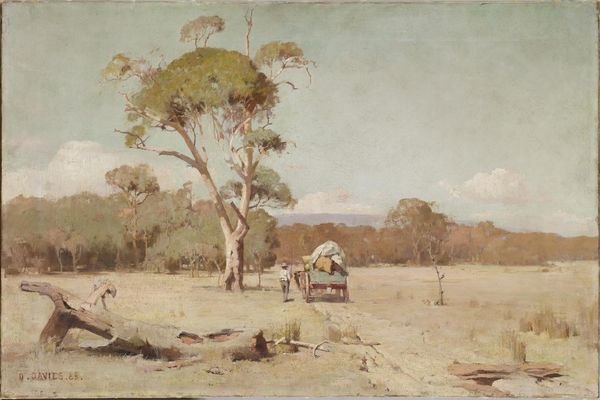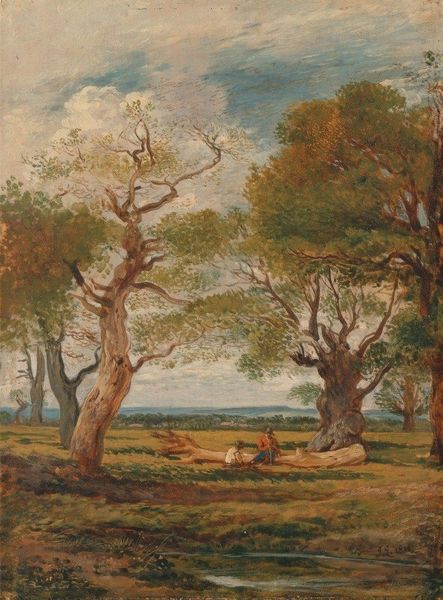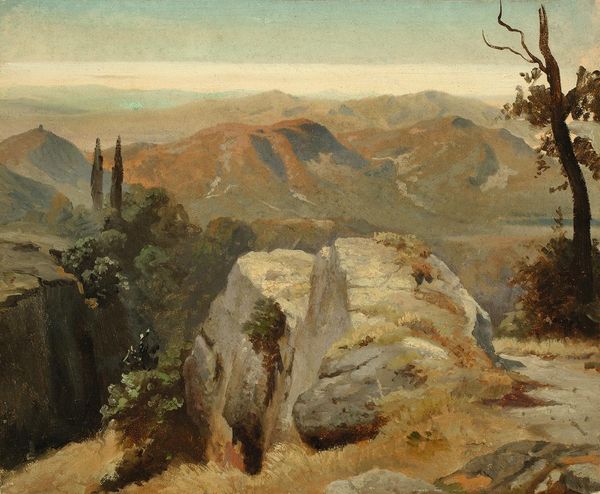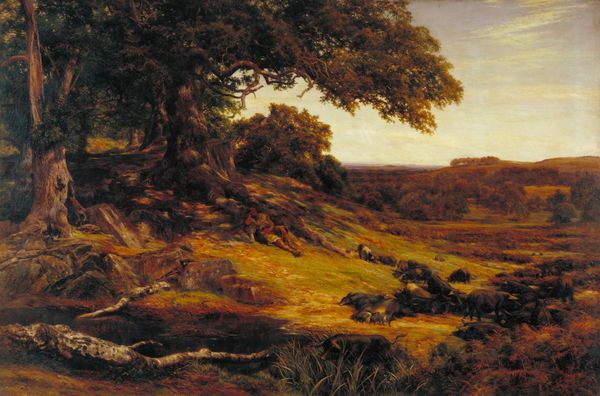
Copyright: Public domain US
Editor: This is Hans Heysen’s "Summer", created in 1909 using watercolors. The dappled light and muted tones give it such a hazy, dreamlike quality. What do you see in this piece, beyond the immediate impression? Curator: The most striking element, for me, is the formal relationship between light and form. Note how the artist employs light not to simply illuminate the scene, but as a structural element defining space and volume. The subtle gradations of tone across the trunks of the trees create a sense of depth, while simultaneously flattening the image onto the picture plane. Do you see how the arrangement of the sheep guide the eye? Editor: I do! They kind of weave you into the space. So, it's not just representational, it's about the relationships between the shapes and colors themselves. Curator: Precisely. Observe how Heysen's application of watercolor challenges traditional landscape painting. The transparency of the medium and visible brushstrokes serve to emphasize the materiality of the painting, drawing our attention to the surface itself, rather than merely serving as a window onto the natural world. It calls into question our understanding of form and void. Editor: That makes so much sense. I hadn't really considered the technique as integral to the subject. I was too caught up in the peacefulness of the landscape! Curator: And isn't that the joy of art? Shifting our perception and prompting inquiry? Editor: It really is. Thanks to that deep dive, I see now how every artistic choice contributes to a whole that’s far more than just a pretty picture. Curator: Indeed, and formalism helps us understand why that pretty picture works.
Comments
No comments
Be the first to comment and join the conversation on the ultimate creative platform.
